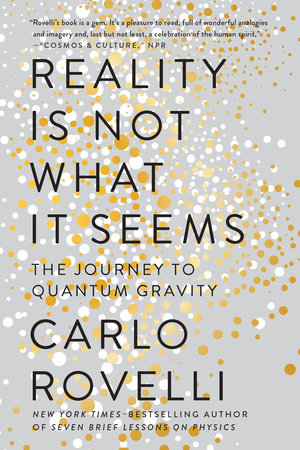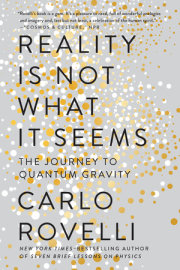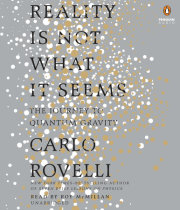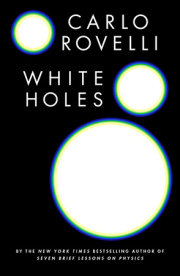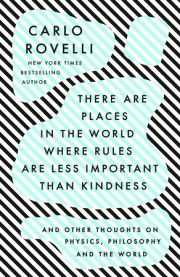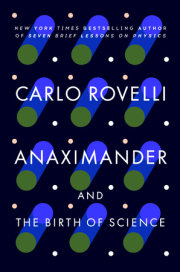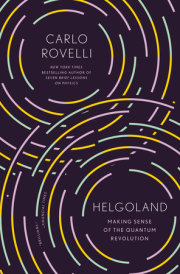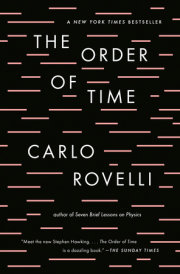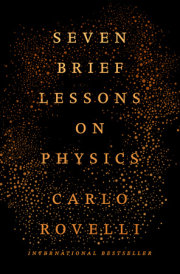INTRODUCTION
Walking Along the Shore
We are obsessed with ourselves. We study
our history,
our psychology,
our philosophy,
our gods. Much of our knowledge revolves around ourselves, as if we were the most important thing in the universe. I think I like physics because it opens a window through which we can see further. It gives me the sense of fresh air entering the house.
What we see out there through the window is constantly surprising us. We have learned a great deal about the universe. In the course of the centuries, we have come to realize just how very many wrong ideas we had. We thought that Earth was flat, and that it was the still center of our world. That the universe was small, and unchanging. We believed that humans were a breed apart, without kinship to the other animals. We have learned of the existence of quarks, black holes, particles of light, waves of space, and the extraordinary molecular structures in every cell of our bodies. The human race is like a growing child who discovers with amazement that the world consists not just of his bedroom and playground, but that it is vast, and that there are a thousand things to discover, and innumerable ideas quite different from those with which he began. The universe is multiform and boundless, and we continue to stumble upon new aspects of it. The more we learn about the world, the more we are amazed by its variety, beauty, and simplicity.
But the more we discover, the more we understand that what we don’t yet know is greater than what we know. The more powerful our telescopes, the more strange and unexpected are the heavens we see. The closer we look at the minute detail of matter, the more we discover of its profound structure. Today we see almost to the Big Bang, the great explosion from which, fourteen billion years ago, all the galaxies were born—but we have already begun to glimpse something beyond the Big Bang. We have learned that space is curved but already foresee that this same space is woven from vibrating quantum grains.
Our knowledge of the elementary grammar of the world continues to grow. If we try to put together what we have learned about the physical world in the course of the twentieth century, the clues point toward something profoundly different from what we were taught at school. An elementary structure of the world is emerging, generated by a swarm of quantum events, where time and space do not exist. Quantum fields draw together space, time, matter, and light, exchanging information between one event and another. Reality is a network of granular events; the dynamic that connects them is probabilistic; between one event and another, space, time, matter, and energy melt into a cloud of probability.
This strange new world is slowly emerging today from the study of the main open problem in fundamental physics:
quantum gravity. The problem of synthesizing what we have learned about the world with the two major discoveries of twentieth-century physics: general relativity and quantum theory. To quantum gravity, and the strange world that this research is unfolding, this book is dedicated.
This book is a live coverage of the ongoing research: what we are learning, what we already know, and what we think we are be- ginning to understand about the elementary nature of things. It starts from the distant origin of some key ideas that we use today to order our understanding of the world and describes the two great discoveries of the twentieth century—Einstein’s general relativity and quantum mechanics—trying to put into focus the core of their physical content. It tells of the picture of the world emerging today from research in quantum gravity, taking into account the latest indications given by nature, such as the confirmation of the cosmological Standard Model obtained from the Planck satellite and the failure at CERN to observe the supersymmetric particles that many expected. And it discusses the consequences of these ideas: the granular structure of space; the disappearance of time at small scale; the physics of the Big Bang; the origin of black hole heat— up to the role of information in the foundation of physics.
In a famous myth related by Plato in the seventh book of
The Republic, some men are chained at the bottom of a dark cave and see only shadows cast upon a wall by a fire behind them. They think that this is reality. One of them frees himself, leaves the cave, and discovers the light of the sun and the wider world. At first the light, to which his eyes are unaccustomed, stuns and confuses him. But eventually he can see, and he returns excitedly to his companions to tell them what he has seen. They find it hard to believe.
We are all in the depths of a cave, chained by our ignorance, by our prejudices, and our weak senses reveal to us only shadows. If we try to see further, we are confused; we are unaccustomed. But we try. This is science. Scientific thinking explores and redraws the world, gradually offering us better and better images of it, teaching us to think in ever more effective ways. Science is a continual exploration of ways of thinking. Its strength is its visionary capacity to demolish preconceived ideas, to reveal new regions of reality, and to construct new and more effective images of the world. This ad- venture rests upon the entirety of past knowledge, but at its heart is change. The world is boundless and iridescent; we want to go and see it. We are immersed in its mystery and in its beauty, and over the horizon there is unexplored territory. The incompleteness and the uncertainty of our knowledge, our precariousness, suspended over the abyss of the immensity of what we don’t know, does not render life meaningless: it makes it interesting and precious.
I have written this book to give an account of what—for me—is the wonder of this adventure. I’ve written with a particular reader in mind: someone who knows little or nothing about today’s physics but is curious to find out what we know, as well as what we don’t yet understand, about the elementary weave of the world— and where we are searching. And I have written it to try to communicate the breathtaking beauty of the panorama of reality that can be seen from this perspective.
I’ve also written it for my colleagues, fellow travelers dispersed throughout the world, as well as for the young women and men with a passion for science, eager to set out on this journey for the first time. I’ve sought to outline the general landscape of the structure of the physical world, as seen by the double lights of relativity and of quantum physics, and to show how they can be combined. This is not only a book of divulgation; it’s also one that articulates a point of view, in a field of research where the abstraction of technical language may sometimes obscure the wide-angle vision. Science is made up of experiments, hypotheses, equations, calculations, and long discussions; but these are only tools, like the instruments of musicians. In the end, what matters in music is the music itself, and what matters in science is the understanding of the world that science provides. To understand the significance of the discovery that Earth turns around the sun, it is not necessary to follow Copernicus’s complicated calculations; to understand the importance of the discovery that all living beings on our planet have the same ancestors, it is not necessary to follow the complex arguments of Dar- win’s books. Science is about reading the world from a gradually widening point of view.
This book gives an account of the current state of the search for our new image of the world, as I understand it today. It is the reply I would give to a colleague and friend asking me, “So, what do you think is the true nature of things?” as we walk along the shore on a long midsummer’s evening.
Copyright © 2017 by Carlo Rovelli. All rights reserved. No part of this excerpt may be reproduced or reprinted without permission in writing from the publisher.

